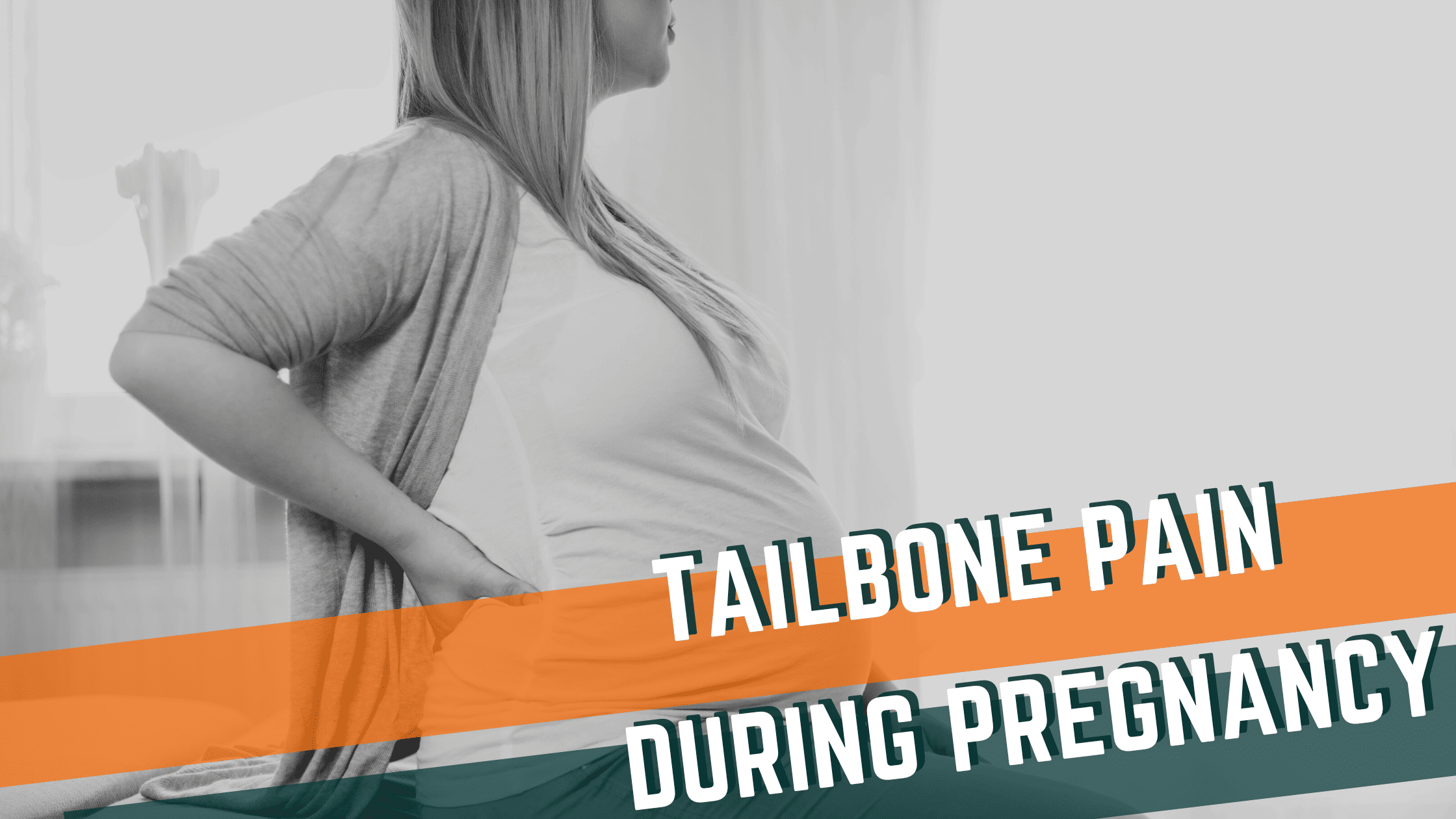
Tailbone pain during pregnancy is common, but that doesn’t mean it’s normal! In fact, many women experience tailbone pain during pregnancy due to the many expected changes that the female body goes through.
Tailbone pain typically occurs due to the changes the tailbone experiences as the uterus grows to make room for the baby and potential postural changes. For some, this can cause pelvic floor muscle spasms or tightness. Since there are many pelvic floor muscles that attach directly to the tailbone, it makes sense that tightness or spasm of these muscles can create increased tailbone pain.
Symptoms of Tailbone Pain During Pregnancy
- The classic presentation of tail bone pain includes a “deep ache” or “tenderness” right around the tailbone area.
- The pain will usually be worse with prolonged sitting, leaning back while seated, prolonged standing, and rising from a seated position. Some individuals report pain with bowel movements and deep insertional intercourse.
How to Relieve Tailbone Pain During Pregnancy
With uncomplicated pregnancies, exercise is going to be the best solution for resolving tailbone pain during pregnancy. Getting your heart rate up can help pump inflammation out of the area, as well as significantly improve blood flow to the tailbone area.
The ability to know how to relax the pelvic floor is also very important. And as an added bonus, the exercises below are great for birth prep and allowing the pelvic floor musculature to relax and prepare for birth.
Cat/Cow Child’s Pose & Back Supported Deep Squat/Pigeon pose
View Stretches & Exercises Here: https://www.instagram.com/p/CrOLYlkL8PE/
- Being able to relax the pelvic floor is great, but so is knowing how to contract the pelvic floor and strengthen it to also support your body as the baby grows and improve recovery post birth.
View Additional Stretches & Exercises Here: https://www.instagram.com/reel/CSu5G3fF3sj/
Still Experiencing Tailbone Pain?
If you are continuing to experience tailbone pain during pregnancy or worry that you lack the knowledge to safely progress, please know that a pelvic floor physical therapist can help. Additional treatments that are useful during this time in your pregnancy include an internal assessment, manual work, education on self-internal release with a pelvic wand, spinal manipulation/mobilization, dry needling, and cupping.
Have additional questions or are interested in having an Onward Physical Therapist join you on your pregnancy journey? Schedule an appointment or free phone consultation to discuss your options today!
Recent Articles
Why Early Intervention Physical Therapy Accelerates Your Recovery

What to Expect at Your First Physical Therapy Session?

How to Choose a Physical Therapist

The Top 5 Misconceptions About Physical Therapy

The Complete Guide to Physical Therapy

